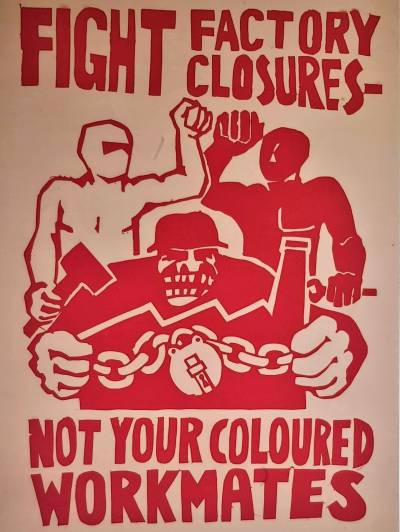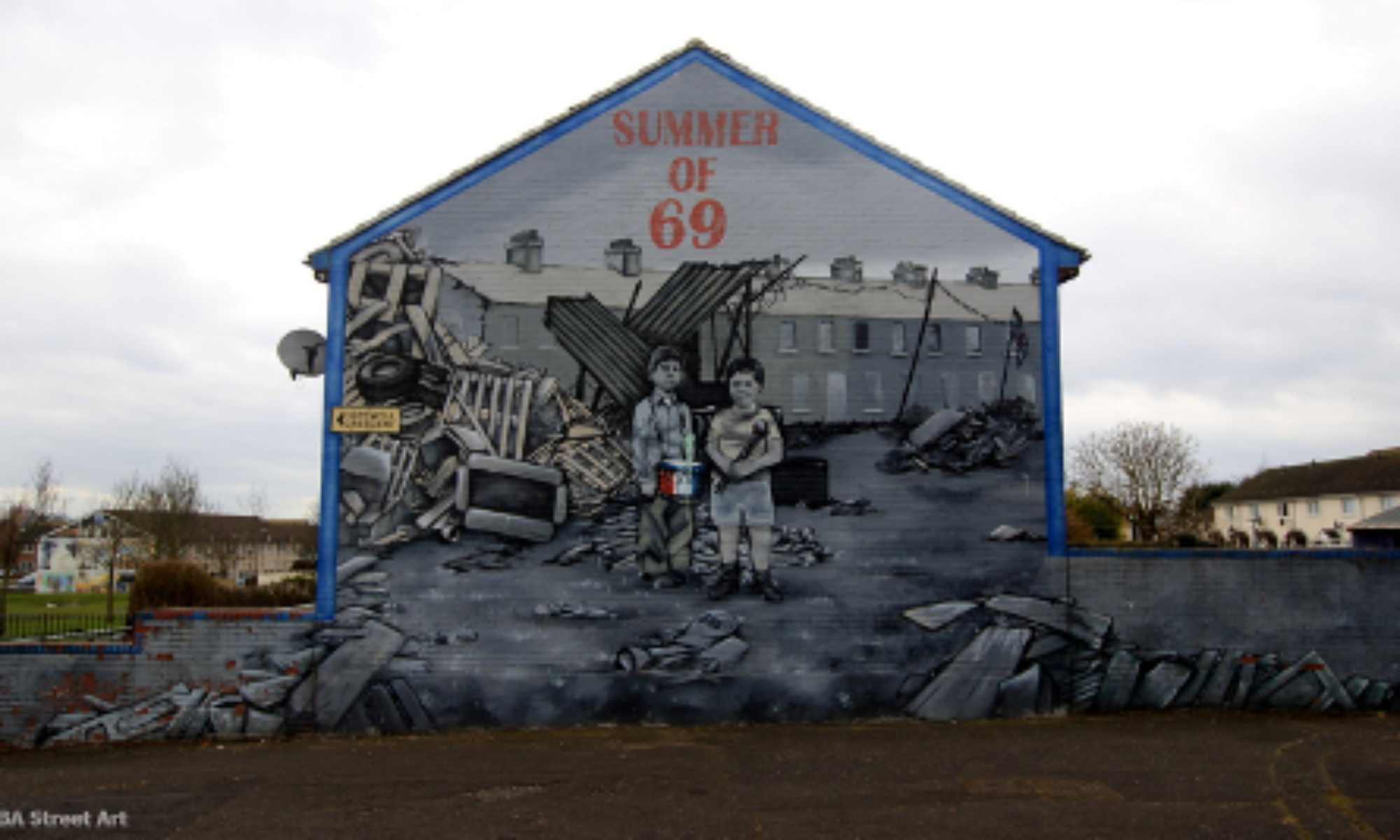The use of posters to voice one’s opinion on a certain event has always been very fascinating to me. Instead of writing an article, a lot can be conveyed through a simple image and a few words printed onto a poster. I studied a lot, in my junior year of high school, how to analyze a political poster to understand the full story behind and meaning of a political poster. It is an art. After inspecting the posters regarding the Irish civil rights era from Geoff Brown, it is easy to understand what was going on politically when the posters were made, and the voices of civilians upon those matters.

This poster, created after Enoch Powell’s ‘Rivers of Blood’ speech of April 20, 1968, shows the anger people felt after that racist speech. This poster also touches on racism, targeting people for their skin color and race. After some research on this infamous ‘Rivers of Blood speech’, Powell essentially argued that Britain should not allow immigration to Britain from the country’s former colonies and to send home immigrants that have already moved to Britain, on the claims that there would be a violent clash between white and black communities. I think this poster is still very relevant today. With Donald Trump closing borders to countries he believes are dangerous, and the wall between the US and Mexico, anti-immigration is still prevalent. Almost four years after Trump pledged to divide Mexico and the US with a wall, it has not been completed for the reasons why this poster was created: immigrants are not the issue, racism is. With the Black Lives Matter movement in the United States, there is still a fight to end racism, making yet another connection between 1968 and 2020.

I also think that the use of posters is important to convey a message. A few words and an image can have just as much of an effect, if not more, than an essay. Especially in today’s society where people have such short attention spans, a strong poster may have a stronger impact. I do think, however, when analyzing posters made in the 68 era, some research is necessary to fully understand the message that each poster conveys. Without prior knowledge of an event, I think that the poster is much harder to interpret. Once the history surrounding the creation of the poster is properly understood, the message can be understood for generations to come.
I enjoyed the parallels that you drew in your blog post between political actions today and those of the years surrounding 1968. When I was researching this class, one detail that grabbed my attention was that we would be studying some of the art of the time period as well as readings. I feel that art from a period of events is often overlooked as unimportant; however, as you point out here, the poster has a story that represents more than just the face-value meaning of the art. That is why I find it so intriguing. These posters that we have been shown by Geoff Brown and Sam Lord are proof of this. These two, and those like them, gave power to this art and used in an intricate and fascinating way. It is clear in how they talk of it that they knew of this power back then and they still do now. Like Geoff Brown said today, there is something “getting your hands dirty” and creating the poster yourself that is really special.